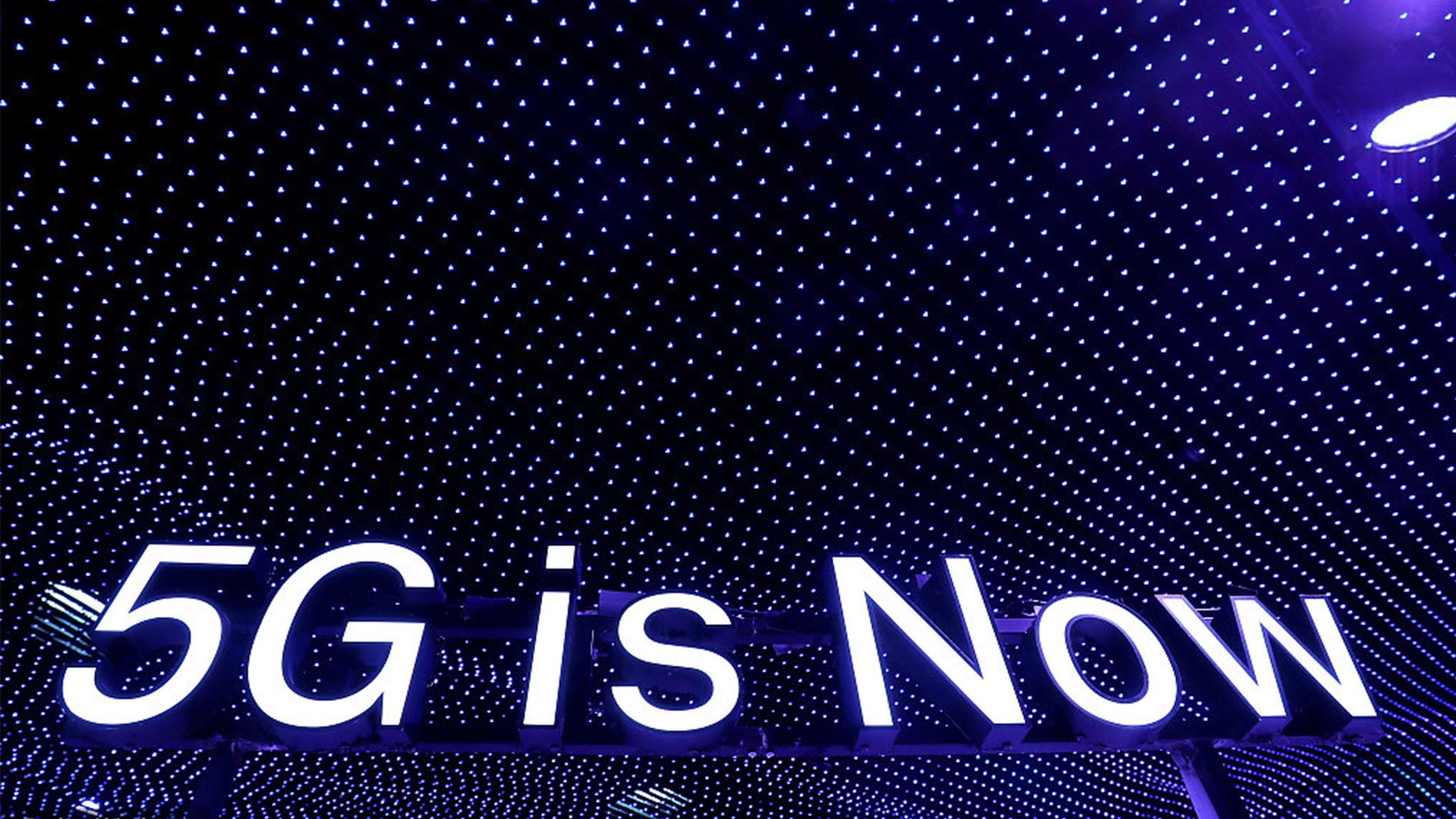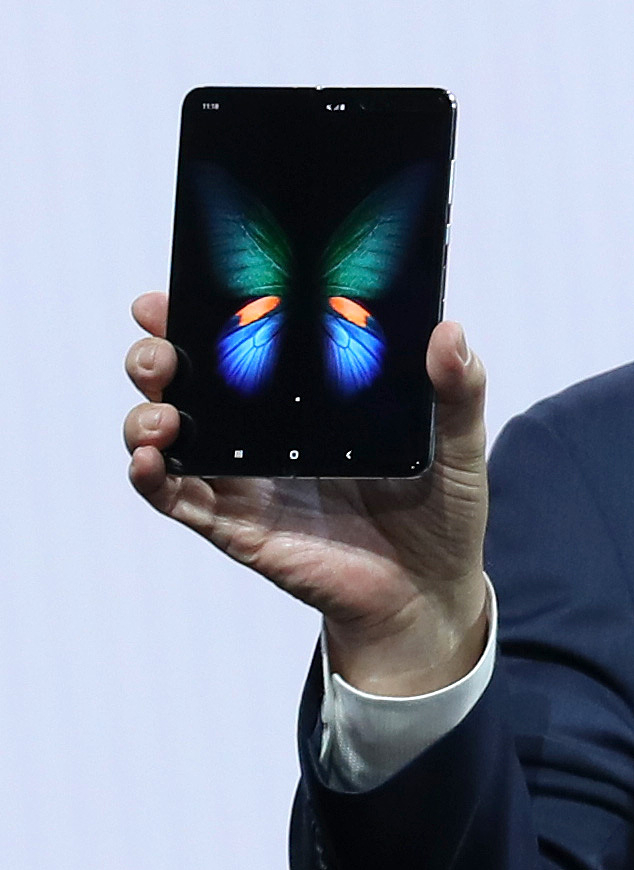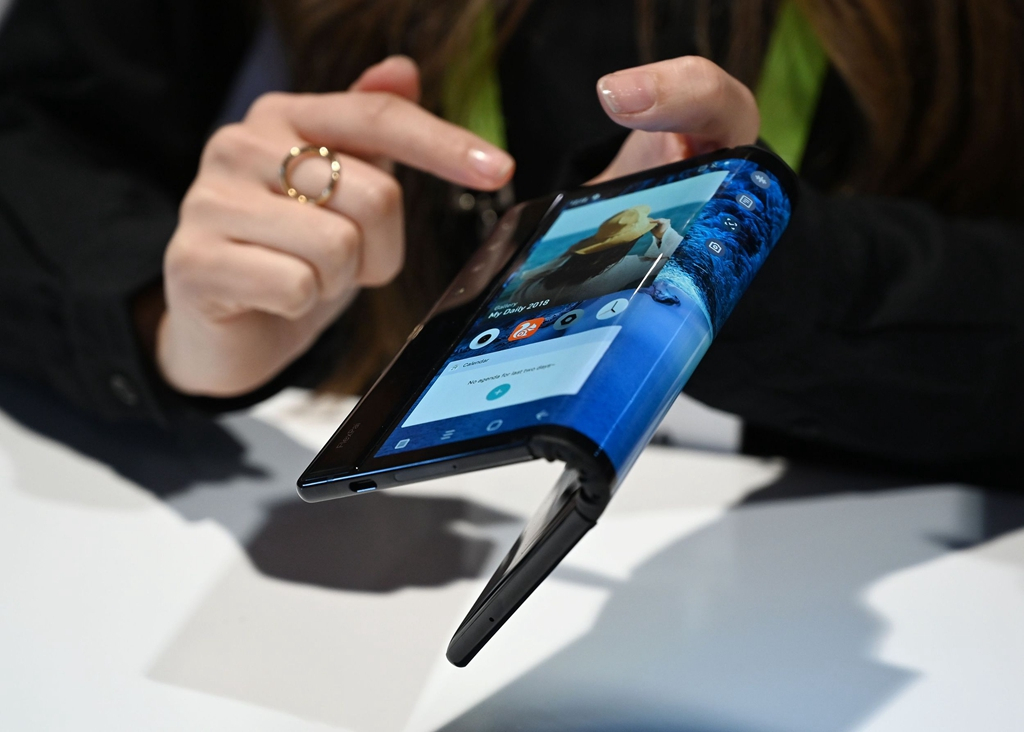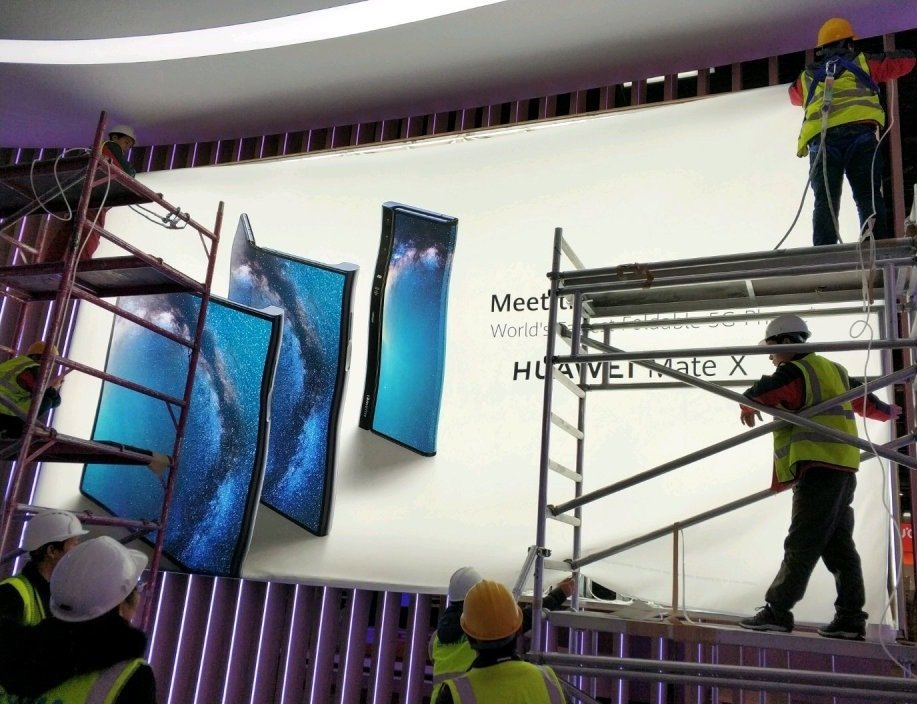
Technology
20:54, 23-Feb-2019
Will your next phone be foldable and 5G?
By Gong Zhe, Guo Meiping
01:20

Did you stop updating your smartphone since the recent products were not so innovative (or too expensive)? Now it seems we got another reason to shell out on new mobile technologies.
The Mobile World Congress (MWC) is about to begin on February 25 in Barcelona, Spain. Smartphone makers are ready to demonstrate their best to attract us.
And everyone is preparing "secret weapons" that are known to all: foldable screens and 5G.
Foldable, so what?

Samsung's Mobile Division President and CEO DJ Koh holds the new Samsung Galaxy Fold smartphone during the Samsung Unpacked event in San Francisco, February 20, 2019. /VCG Photo
Samsung's Mobile Division President and CEO DJ Koh holds the new Samsung Galaxy Fold smartphone during the Samsung Unpacked event in San Francisco, February 20, 2019. /VCG Photo
We love smartphones because it is small yet powerful. And we love tablets for its big screen. What if we can have all the benefits in one device?
This is why foldable phones are worth trying.
While walking down the street, you want a phone that can be operated using one hand. And when you settle down in a couch, you can unfold it to watch videos on a a larger screen.
Samsung tried to steal the show on Wednesday by announcing its Galaxy Fold. The 2,000-U.S.-dollar device has a 4.6-inch screen on the front, with another 7.3-inch screen folded inside.
The model is so important to the South Korean company that it was used to mark the Galaxy brand's 10-year anniversary.
Samsung is not the first player on the ground. The Flexpai made by Royole was claimed to be the first foldable phone. While folded, Flexpai's screen faces outward, thanks to the extra durability of the flexible screens.

The folding and capabilities of the Royole FlexPai tablet and phone are demonstrated at the Royole booth at CES 2019 consumer electronics show at the Las Vegas Convention Center in Las Vegas, Nevada, January 8, 2019. /VCG Photo
The folding and capabilities of the Royole FlexPai tablet and phone are demonstrated at the Royole booth at CES 2019 consumer electronics show at the Las Vegas Convention Center in Las Vegas, Nevada, January 8, 2019. /VCG Photo
Xiaomi also demoed its prototype foldable phone but claimed it's far from mature.
While the phones are being rolled out, the technology still has a catch: software capability. The mobile world is all about user experience, which may not be so good during the early stages of foldable phone models.
The screens of the foldable phones, as we know for now, have an aspect ratio approaching 4:3. It used to be the dominant ratio among PC monitors, but now 16:9 is the mainstream as most videos are made for widescreens.
This means we will see board black-edges on top and bottom of the screen when watching full-screen video on a foldable phone. Compare the Huawei Mate 20 X with an iPad Mini, and you'll get the idea.
Good news is, foldable phones can display multiple apps on the screen (known as "multitasking") so we can make use of the black edges for chatting or documents.
But the software problem doesn't stop at different aspect ratios. There is also the lack of support for foldable screens....
No rush for 5G phones
5G is definitely a keyword at this year's MWC.
During the launch event on Wednesday, Samsung said its first 5G smartphone Galaxy S10 5G would be available in the early summer.

A leaked banner indicates Huawei's new smartphone model Mate X. /Photo via Twitter/gimme2pm
A leaked banner indicates Huawei's new smartphone model Mate X. /Photo via Twitter/gimme2pm
Other smartphone magnates will also join the 5G battle during MWC. From a leaked banner that went viral among tech enthusiasts on Saturday, Huawei's new phone Mate X, which will be introduced on February 25 local time, is 5G and foldable. Another Chinese brand, OnePlus, has also announced that it will demonstrate its first 5G prototype at the event and will release a 5G smartphone during the second quarter of 2019.
A 5G smartphone might be available for customers within this year, but not the network itself. Without 5G coverage, 5G gadgets will be as ordinary as your 4G devices.
Although the 5G network for commercial use is ready in many countries such as China and the U.S., it's seemingly not going to be available for civilian use across the world by the end of 2019.
Some organizations and analysts anticipated that 5G won't become mainstream within two years.
"While 2019 will mark an important year for more R&D and testing/trials of varying 5G technologies, it is unlikely that 5G will be seen in mobile devices in significant volumes before 2020," said Roberta Cozza, research director at Gartner. "We expect 5G mobile phone sales to total 65 million units in 2020."
Therefore, with rapid hardware iteration, there will be new and better models of 5G smartphones when the network is mature enough for civilian use.

SITEMAP
Copyright © 2018 CGTN. Beijing ICP prepared NO.16065310-3
Copyright © 2018 CGTN. Beijing ICP prepared NO.16065310-3